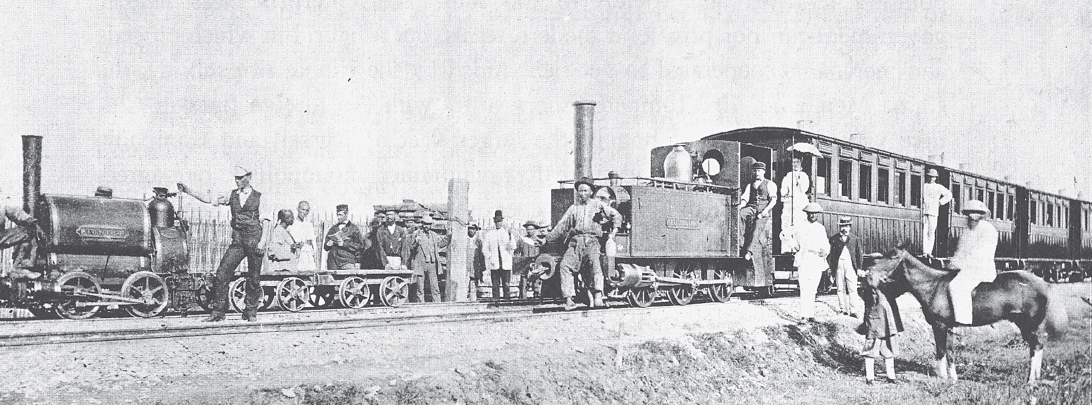Understanding World Societies:
Printed Page 793
Chapter Chronology
After the various rebellions were suppressed, forward-looking reformers began addressing the Western threat. Under the slogan “self-strengthening,” they set about modernizing the military along Western lines. Some of the most progressive reformers also initiated new industries, which in the 1870s and 1880s included railway lines, steam navigation companies, coal mines, telegraph lines, and cotton spinning and weaving factories.

China’s First Railroad
Soon after this 15-mile-long railroad was constructed near Shanghai in 1876 by the British firm of Jardine, Matheson, and Company, the provincial governor bought it in order to tear it out. Many Chinese of the period saw the introduction of railroads as harmful not only to the balance of nature but also to people’s livelihoods, because the railroads eliminated jobs in transport like dragging boats along canals or driving pack horses. (Private Collection/Visual Connection Archive)
Despite the enormous effort put into trying to catch up, China was humiliated yet again at the end of the nineteenth century. First came the discovery that Japan had so successfully modernized that it posed a threat to China. Then in 1894 Japanese efforts to separate Korea from Chinese influence led to the brief Sino-Japanese War in which China was decisively defeated. China’s helplessness in the face of aggression led to a scramble among the European powers for concessions and protectorates in China. At the high point of this rush in 1898, it appeared that the European powers might actually divide China among themselves, the way they had recently divided Africa.
